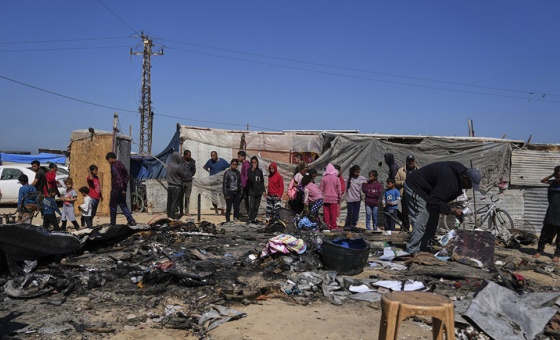This is the last article you can read this month
You can read more article this month
You can read more articles this month
Sorry your limit is up for this month
Reset on:
Please help support the Morning Star by subscribing here
THE Russian jet that crashed in Egypt’s Sinai desert must have been destroyed by external forces, airline directors claimed yesterday.
Metrojet deputy general director Aleksander Smirnov told a press conference that the cause of the disaster “could only have been a mechanical impact on the plane.”
“We are certain that neither technical malfunction nor pilot error” can be blamed for the disaster, Mr Smirnov said.
“The only possible explanation is a mechanical force acting on the aircraft,” he concluded. “There is no combination of system failures that could have broken the plane apart in the air.”
Mr Smirnov also said that the plane decelerated by 186 mph and descended about 5,000 feet one minute before it crashed on Saturday.
Fellow Metrojet director Viktor Yung contradicted the Egyptian version of events by saying that the crew did not send a distress signal.
“As the catastrophic incident started to develop, the crew members were rendered completely incapable,” he said.
“This explains why they didn’t attempt to contact air traffic and report the incident happening on board.”
An Egyptian official had said previously that the pilot radioed that the plane was experiencing technical problems and he intended to try to land at the nearest airport.
Russian presidential spokesman Dmitry Peskov called on all parties yesterday to refrain from speculation about the cause of the disaster.
“Let the investigators produce at least some results first,” he said.
The flight crashed 23 minutes after leaving Sharm el-Sheikh, killing all 224 people on board, the vast majority of them Russian tourists.
The Islamic State (Isis) terrorist group, which Russian air forces in Syria have been blitzing for a month, claimed responsibility for the destruction of the airliner.
But Russian authorities dismissed this on the grounds that the militants possess no sophisticated anti-aircraft weapons capable of reaching the 31,000-foot altitude where the plane disintegrated.
Other possibilities include a bomb or sabotage of the aircraft’s systems.
The flight path northwards across the Sinai peninsula passed close to the airspace of Saudia Arabia — a major backer of Syrian rebels — as well as Jordan and Israel.
The grim search for bodies continued yesterday.





